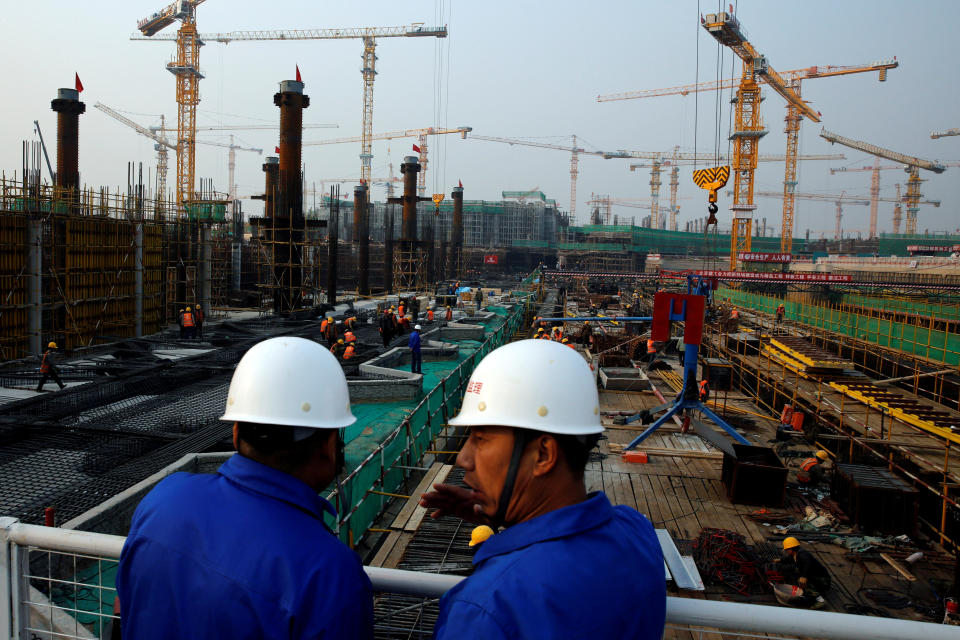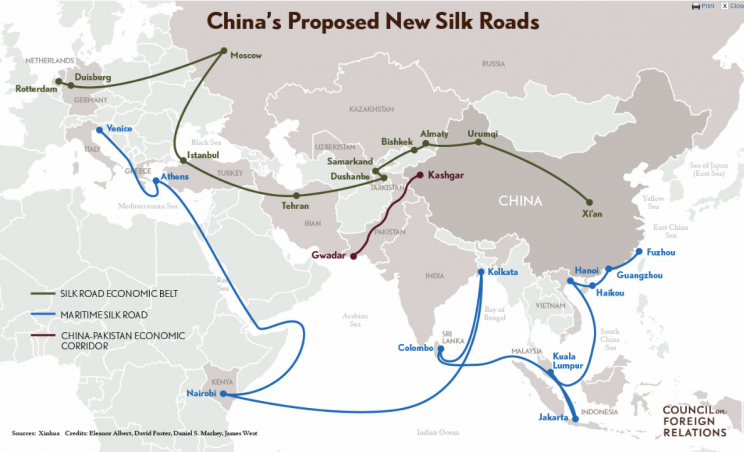How China is upstaging America
Can you think of a grand American plan to build something momentous, similar to the interstate highway system or the NASA moonshot?
Don’t think too hard, because there is no such plan at the moment.
There is in China, however.
China just concluded a two-day showcase of its Belt & Road Initiative, a huge plan to improve the physical and digital infrastructure between China and its trading partners, or build new infrastructure if there isn’t any. Representatives of more than 100 countries, including 28 heads of state, showed up to demonstrate their enthusiasm for participating in the world’s biggest construction project.
China excels at spectacle, and the Belt & Road Forum was as much PR stunt as anything. But the vast scale of the plan and the national ambition behind it dwarfs anything leaders are contemplating in Washington, or European capitals. “If you compare this to what the United States is doing—trying to rescue the steel and aluminum sectors and open a few markets for its goods—we’re pretty small potatoes,” says Scott Kennedy, an expert on the Chinese economy at the Center for Strategic and International Studies. “China is more organized and they’re planning more strategically than the United States.”

China’s plan is to strengthen its overland trade routes through central Asia to Europe, and its maritime trade routes to other Asian nations, Africa, and the rest of the world via the Suez Canal. China pledges to invest in other countries willing to improve their roads, railways, ports, pipelines and communications in ways that improve trade with China. While spending is hard to track, China has probably spent around $50 billion so far, with the tally possibly exceeding $1 trillion eventually, if Beijing keeps its word and partner countries chip in.

Western analysts view the Belt & Road Initiative, or BRI, as China’s way of building “soft power”—the ability to influence other nations without force or coercion. If even moderately successful, BRI could speed the flow of goods to and from China, and increase the volume of trade. As other countries become more dependent on Chinese trade, China’s influence will grow at institutions such as the United Nations and the International Monetary Fund, along with, perhaps, its ability to get its way in various territorial disputes.
There’s political motivation for Chinese President Xi Jinping to promote the plan. Xi is burnishing his credentials as a global leader ahead of a big gathering of the Chinese Communist Party this fall, at which a number of senior party leaders will be determined. To consolidate power, Xi wants a string of visible wins demonstrating his high standing among the world’s potentates. That’s why Xi stood out at this year’s World Economic Forum in Davos, Switzerland, defending globalization while western leaders fretted about waves of populism roiling their nations. Xi’s chummy visit with President Donald Trump in March was another tableau depicting his easy way with world heavies.
There’s a lot that could go wrong with the BRI. Some analysts suspects it’s a scheme for China to unload excess inventories of building materials such as cement, steel and aluminum, which pile up in part because state-subsidized Chinese manufacturers produce more than justified by market demand. If projects meant to be profitable and generate a return on investment go bust instead, it could add to what’s already an excessive amount of bad debt in China. Plus, construction projects in nations with weak or corrupt governments, like those in central Asia, are often plagued by theft and mismanagement. China is just as capable of funding “bridges to nowhere” as the US Congress.
But China will likely reap some rewards from the BRI, at a time when President Trump is reeling America in with his “America first” policies, threats of protectionism and hostile remarks toward neighbors such as Mexico. “Even if China only achieves 10% of what it plans, it’s a big deal,” Kennedy says. “The US has no similar initiatives and is highly chaotic and disorganized.”
Trump does plan to launch his own infrastructure program, with up to $1 trillion in private and government funding for new projects. But that is in line behind contentious legislation on repealing Obamacare and cutting taxes, and might never materialize. And some analysts worry that Trump’s entire agenda could be jeopardized by his recent firing of FBI Director James Comey, the investigation into his ties with Russia, and other controversies.
Trump’s biggest construction priority is his border wall with Mexico, which still lacks funding and is unpopular with voters. If Trump does get his wall someday, it could generate a few thousand temporary jobs and a bit of increased demand for steel and concrete. But it’s not the kind of project that will boost trade or add permanently to economic growth. The Chinese seemed to recognize the limits of walls a long time ago.
Confidential tip line: rickjnewman@yahoo.com
Read more:
Rick Newman is the author of four books, including Rebounders: How Winners Pivot from Setback to Success. Follow him on Twitter: @rickjnewman.

